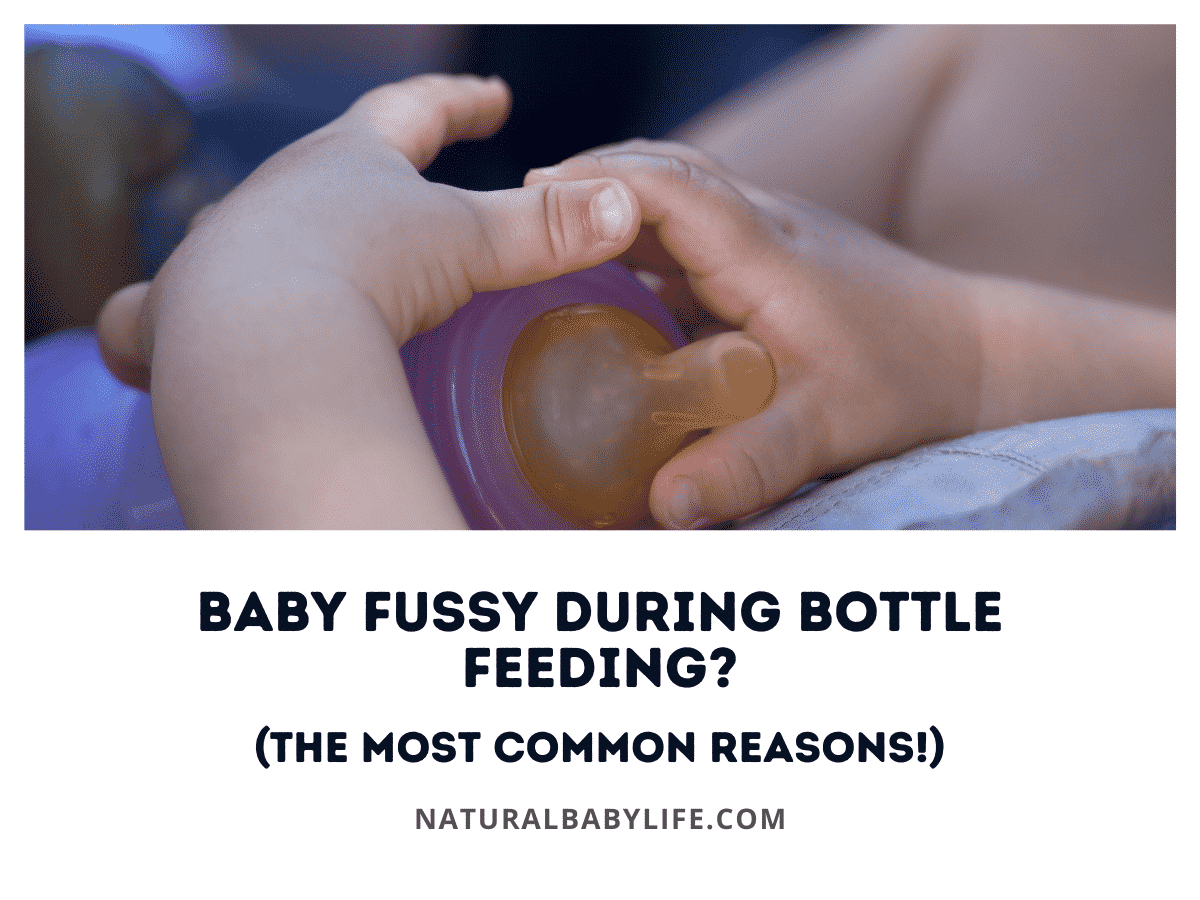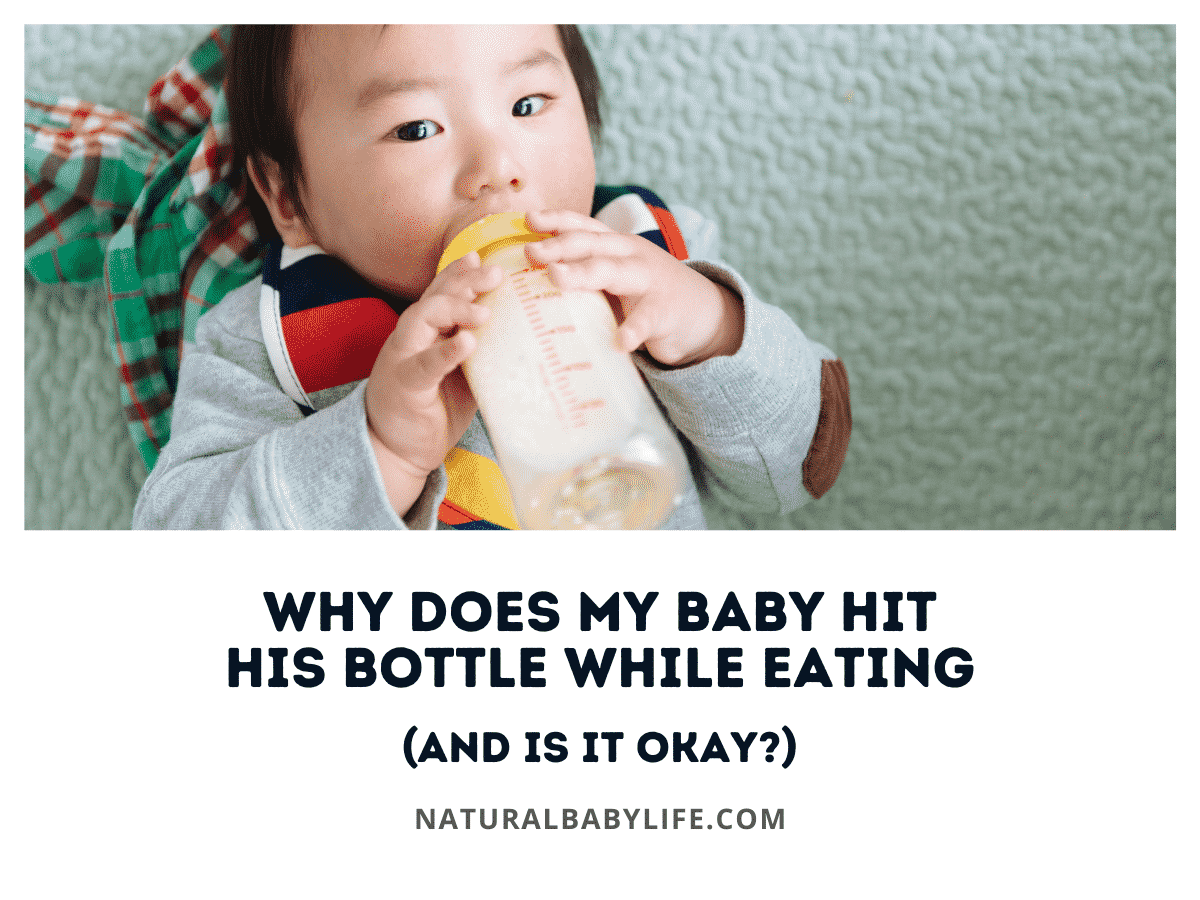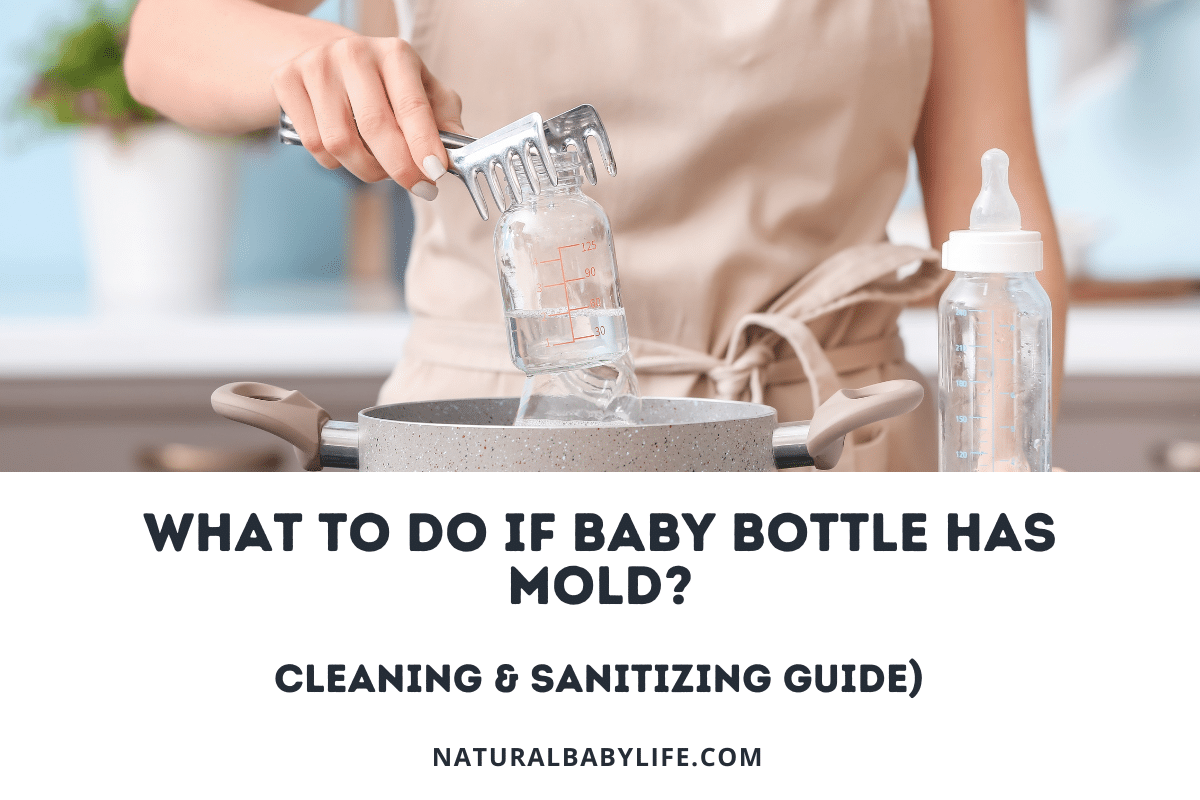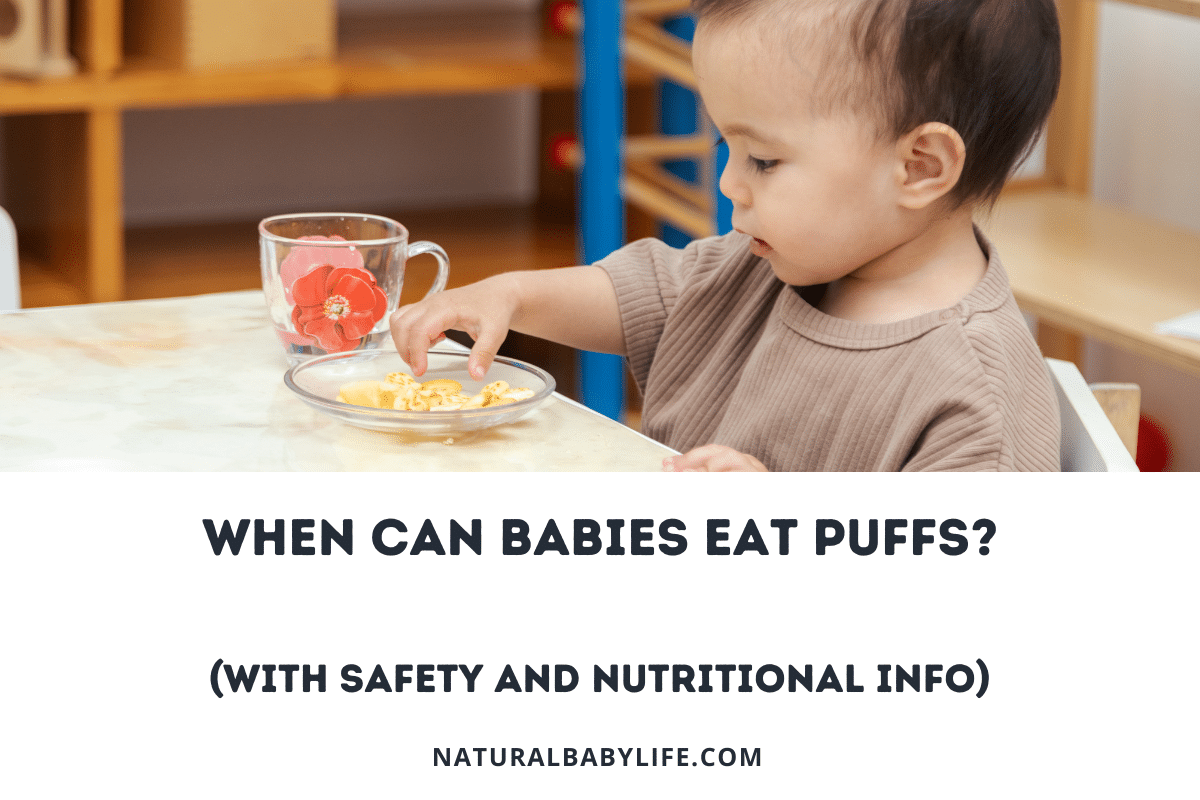It’s feeding time and as you try to feed your baby, he’s fussy and won’t cooperate. Trying to feed a fussy baby can be frustrating for both the baby and you. What is the reason for the fussiness and what can you do about it?
There is a wide range of reasons your baby is fussing while bottle feeding, including having reflux or other stomach issues such as having intolerances or an upset stomach. Your baby could also be overly tired or not hungry, among many other possibilities. Determining why your little one is fussy is the first step to helping soothe them.
Keep reading to learn more about the most common reasons for a fussy baby during feeding time and some tips on how to handle it.
Table of Contents
The most common reasons your baby is fussy while bottle feeding
Having a fussy baby during feeding time is a common occurrence that every family will experience at the very least once, although it’ll most likely be more than that.
Here are some of the most common reasons why your baby is fussy while eating or bottle feeding:
- formula feeding
- intolerances/allergies
- diarrhea/upset stomach
- breastmilk feeding in a bottle
- cow’s milk (for older babies)
- appetite
- feeding position
- acid reflux
- bottle nipple size
- bottle type
- bottle temperature (warm, cold, etc.)
- baby’s tongue (things like tongue tie, etc.)
- transitioning away from the bottle
- night feedings
Formula feeding
If your baby is on formula, you may have chosen a specific one for them or perhaps you used the samples you were given and they’ve been fine.
If your baby starts to get fussy during feeding times it may be due to the formula you are giving them. It is important to look for signs that he’s uncomfortable, such as straining to poop or being excessively gassy after being fed.
Check the formula to make sure it’s not expired or has been open for over a month and if neither of these applies, consult with your child’s doctor about possibly switching to a different type to see if it makes a difference since many brands have a sensitive or gentle formula.
It is always best to consult with your doctor first since they will be able to guide you on the best way to transition as well as be able to give you advice on which type to try.
Intolerances/allergies
Although it’s rare, some babies may end up having an intolerance to the protein in cow’s milk.
These intolerances do occur and you should contact your child’s doctor if your baby has allergy symptoms so they can work with you to figure out which ingredient is causing issues since babies could also be potentially allergic to soy. Your doctor could potentially have you switch to a hypoallergenic formula.
Along with being fussy during feeding times, here are some other signs of an allergy or intolerance to look out for:
- blood or mucus in the stool
- rashes
- vomiting
- diarrhea
Diarrhea or upset stomach
There are times your baby may have stomach issues, including diarrhea or an upset stomach, leading to him being fussy during feeding times.
If you’re transitioning to food or between formulas, it may take a couple of days for your baby to adjust. Continue to offer formula as normal and attempt to get him to drink a little.
If your baby has diarrhea it is important to watch him for dehydration. Some signs of dehydration include dry mouth, dry skin, shrunken eyes, crying without tears, dry diapers between 8-12 hours, and more. If you are seeing these signs call your health care provider immediately for medical advice.
Offer breastmilk in a bottle
If your baby is normally breastfed, the switch to a bottle may be jarring.
This could lead to your baby being fussy during feeding times since he’s used to being at the breast. There are ways you can work with your baby to start accepting a bottle:
- Give breastmilk in the bottle – You can help your baby adjust to the transition between breastfeeding and bottle feeding (especially formula) is to feed your little one breastmilk in the bottle.
- Let someone else offer the bottle – Try having your partner or another adult offer the bottle instead of mom. Your baby knows that mom can offer his ideal food choice – breastmilk – so he may be more open to accepting the bottle from someone else.
- Warm the bottle to body temperature – Your breastfed baby has probably become accustomed to his meals coming to him at a very specific temperature: yours. Try warming the bottle up to body temperature by placing it in a bowl of warm water.
Transition to cow’s milk
At around a year old, your baby can begin the transition to cow’s milk from formula and this transition can cause issues leading to fussiness during feeding time. This transition may cause minor stomach issues and stool discoloration, but should be temporary and will resolve itself once your baby is used to the new milk.
Since cow’s milk will be new for your baby’s digestive system it is recommended that you make the transition slowly. Start with making a bottle with a 25% milk and 75% formula mix then work towards a bottle that is 100% cow’s milk over the week.
Appetite
Your baby’s appetite may also be a contributing factor for fussiness during feeding time.
Your baby may not be hungry just yet or they may be overly hungry and frustrated for food. Either of these could cause your baby to even refuse the bottle initially.
As your baby gets older you will be able to start stretching the time in between meals. If you notice that your baby is getting fussy and refuses his 3 pm feeding, then start trying to feed him at 3:30 or even 4. This is your baby’s way of telling you he’s not hungry.
Babies can get extremely fussy when they are very hungry as well. They may be too worked up to realize you are trying to feed them so try to watch out for your baby’s hunger cues so that you can get the bottle ready sooner. You want to try to feed your baby before the frustration sets in.
Feeding position
When babies are young, they tend to take their bottles lying down more, maybe with their heads propped up. But as they get older, their preferences of feeding position may change or the position you may normally feed them in may get uncomfortable. They may gradually work towards a sitting position while taking a bottle as well.
If your baby is getting fussy during eating, pay attention to how you are holding him when it starts so that you know that the position may not work anymore. Play around with different positions to see which ones are more comfortable for the baby and you, especially if you are still holding him while feeding.
Some positions may cause your baby to suck in more air, creating a gassy feel so be on the lookout for that as well.
Acid reflux
Acid reflux is one of the biggest causes of fussiness during feeding times, especially in younger babies. Babies with this often experience pain and discomfort or pain while eating, making it understandable while they’re so fussy while eating.
If your baby has severe reflux and is not gaining weight, you need to contact your medical care provider.
If your baby’s reflux is not severe, there are things you can do to help alleviate his discomfort, such as feeding your baby in an upright position and keeping him upright immediately after feeding. You can also break up the feedings into smaller, more frequent feedings and burp your baby often.
Talk to your doctor if your baby’s reflux is still continuing after the age of 1 to see if there’s anything more you should do.
Bottle nipple size
Different bottles have different nipple shapes and sizes, which can have an effect on if your baby is fussy at feeding times.
The sizes reflect the flow of the milk from the bottle, with lower sizes being a slow flow for younger babies and higher flow for older babies. Babies may grow frustrated if they are either not getting enough milk or if they are getting too much in their mouth.
Changing the size of your bottle’s nipples could help make sure your baby isn’t struggling to get the appropriate amount of milk. If you notice that he’s struggling, needing to suck harder to get his milk then you should size up. However, having too much milk too fast means you need a smaller nipple.
Bottle type and size
The type of bottle you use can also be creating a situation where your baby is fussy during feeding times.
Each bottle brand has features or shapes specific to them and something may not be to your baby’s liking, creating a fussy baby. If your newborn baby doesn’t want to take a bottle from you, you might want to consider trying a different bottle to see if that makes a difference.
Keep any sample bottles from your registry gifts so you have a selection to choose from. We went through several different bottles with our oldest before settling on the Dr. Brown bottles, which he liked and ended up helping his reflux.
Bottle temperature
The temperature of your baby’s bottle is another factor that can cause your baby to get fussy, especially if your baby is used to a specific bottle temperature. Some babies will have no trouble switching from a warm bottle to a cold, but for others, it’s more jarring.
You can easily warm up your baby’s bottle as long as you have access to warm water and a bowl, but never microwave a bottle or put it in a boiling pot. Instead, place warm to hot water into a bowl then place your baby’s bottle into the bowl upright. Take it out to swirl it occasionally to mix the bottle better and this method will warm.
If your baby is more on the picky side when it comes to temperature, you could also consider working towards him accepting a more cold bottle but introducing it gradually. Every day, you can give your baby a bottle that’s less warm than the previous until it is more on the cold side. Your baby will be able to adjust to the new temperature and potentially be able to accept a colder bottle as the new norm.
Baby’s tongue
Maybe you’ve made changes to your bottle and the nipple, and your formula is fine so what could the problem be?
Some babies are born with a condition called a tongue tie, which is when there’s a thick, short band of tissue that tethers the bottom of your baby’s tongue’s tip to the floor of his mouth, making it hard for some babies to eat. While this mainly affects babies who are breastfeeding, this could also be a potential issue for bottle-fed babies as well.
If you see that your baby has a tongue tie that is affecting his ability to eat or suspect that he does, talk to your baby’s doctor. One of the most common ways to correct this is for your baby to undergo a procedure called a frenotomy, where they snip that band of tissue in order to free the tongue to move more freely. Your doctor will be able to help you decide if this is the best course of action for your baby.
Transitions away from the bottle
Once your baby is older many parents will begin the transition away from bottles to sippy cups, especially during the day. This may create some tension and possibly some frustration as you work towards leaving the bottle behind and your baby may get fussy during that specific feeding time.
In order to help during this time, you can start with a cup with a spout since it will feel most familiar to your baby and may help make the transition easier. You can also fill it with other liquids such as diluted juice instead of just formula or milk once your baby is at least one.
Night feedings
There could be a few reasons your baby is fussy during their night feeding with one of the most common reasons being that he is overstimulated and may need a quieter environment.
Try to keep lights off or low to avoid waking your baby fully and talk in low soothing voices. This will help your baby keep calm during the nighttime feeding.










